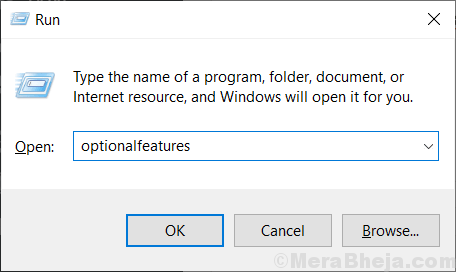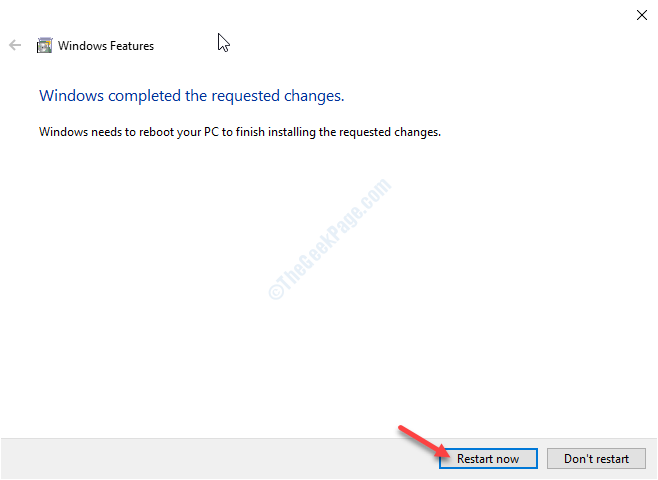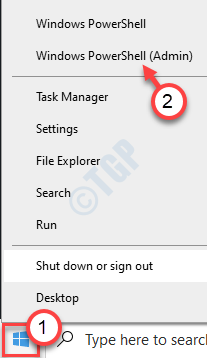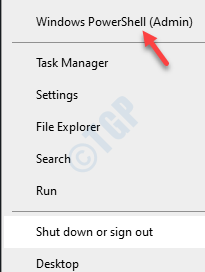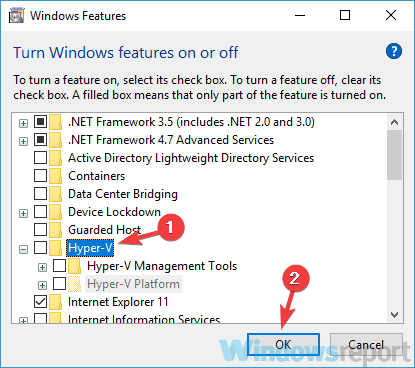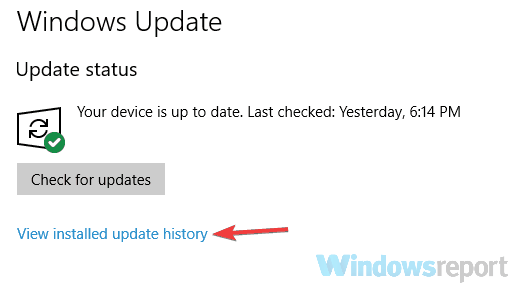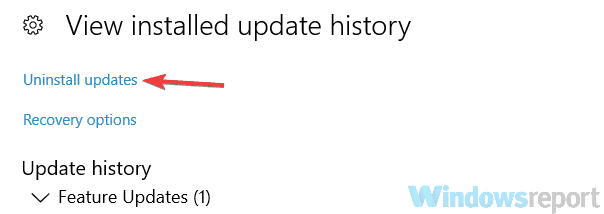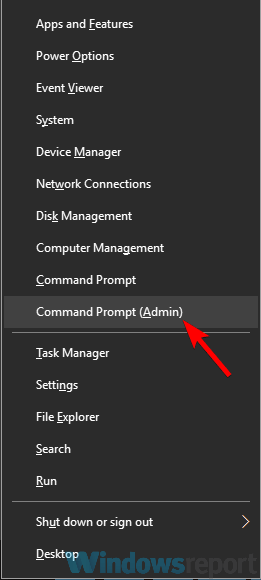I am new to Docker Desktop for Windows. I am getting an error when I tried the hello world example by following this. Update
Below is the steps I followed:
1 Installed Docker for Windows, stable version
2 Both Hyper-V and Virtualization have been enabled on my Windows 10
However, error below when switch to Linux container:
An error occurred.
Hardware assisted virtualization and data execution protection must be enabled in the BIOS. See https://docs.docker.com/docker-for-windows/troubleshoot/#virtualization-must-be-enabled
Please note the problem in this post occurs when using Windows containers. Step 3 is using Windows containers, not Linux.
3 Error below when trying out hello world
PS C:\Users\'#.lp> docker run hello-world
Unable to find image 'hello-world:latest' locally
latest: Pulling from library/hello-world
407ada6e90de: Pull complete
9c9e16cbf19f: Pull complete
2cb715c55064: Pull complete
990867d1296d: Pull complete
Digest: sha256:445b2fe9afea8b4aa0b2f27fe49dd6ad130dfe7a8fd0832be5de99625dad47cd
Status: Downloaded newer image for hello-world:latest
C:\Program Files\Docker\Docker\Resources\bin\docker.exe: Error response from daemon: container e646da0e13b5c2ba92db3ade35f6a334f9c2903efde26a78765f55f0498a86f1 encountered an error during CreateContainer: failure in a Windows system call: No hypervisor is present on this system. (0xc0351000) extra info: {"SystemType":"Container","Name":"e646da0e13b5c2ba92db3ade35f6a334f9c2903efde26a78765f55f0498a86f1","Owner":"docker","IgnoreFlushesDuringBoot":true,"LayerFolderPath":"C:\\ProgramData\\Docker\\windowsfilter\\e646da0e13b5c2ba92db3ade35f6a334f9c2903efde26a78765f55f0498a86f1","Layers":[{"ID":"84cbd4e4-1a6a-5e55-86fa-927ba5be73e0","Path":"C:\\ProgramData\\Docker\\windowsfilter\\417caa6a366bad6fe0d68d2b459510e4c50fda5686b37fb91c9363ca103e9475"},{"ID":"e747017d-859e-5513-b9ad-346002efc167","Path":"C:\\ProgramData\\Docker\\windowsfilter\\43e4d5eeaebc150ea9da0bf919302a2d7646461e3da60b5cbd3db15d3d928698"},{"ID":"e0bd7f8a-622c-589f-9752-eb7b80b88973","Path":"C:\\ProgramData\\Docker\\windowsfilter\\e8ee5f9ec8d67bfebe230b67989dd788506e33627a4400bb63ba098b2a3fd733"},{"ID":"6f13d213-2d8c-5c37-b1f5-770f73ad2d9a","Path":"C:\\ProgramData\\Docker\\windowsfilter\\a731844c4d933200e984524b7273ac3a555792bafec6eab30722fdfd7992ee96"}],"HostName":"e646da0e13b5","HvPartition":true,"EndpointList":["0b88e638-56ea-4157-88a7-67fc3bc35958"],"HvRuntime":{"ImagePath":"C:\\ProgramData\\Docker\\windowsfilter\\e8ee5f9ec8d67bfebe230b67989dd788506e33627a4400bb63ba098b2a3fd733\\UtilityVM"},"AllowUnqualifiedDNSQuery":true}.
System information below:
PS C:\Users\'#.lp> docker --version
Docker version 17.09.1-ce, build 19e2cf6
PS C:\Users\'#.lp> docker info
Containers: 0
Running: 0
Paused: 0
Stopped: 0
Images: 0
Server Version: 17.09.1-ce
Storage Driver: windowsfilter
Windows:
Logging Driver: json-file
Plugins:
Volume: local
Network: ics l2bridge l2tunnel nat null overlay transparent
Log: awslogs etwlogs fluentd json-file logentries splunk syslog
Swarm: inactive
Default Isolation: hyperv
Kernel Version: 10.0 16299 (16299.15.amd64fre.rs3_release.170928-1534)
Operating System: Windows 10 Pro
OSType: windows
Architecture: x86_64
CPUs: 4
Total Memory: 7.999GiB
Name: username
ID: 5EK5:6LMU:NPZG:3K2F:W3X7:2G7T:GFYU:GENE:LDBA:UASU:ZF26:T3AU
Docker Root Dir: C:\ProgramData\Docker
Debug Mode (client): false
Debug Mode (server): true
File Descriptors: -1
Goroutines: 24
System Time: 2017-12-24T20:16:32.0728521Z
EventsListeners: 0
Registry: https://index.docker.io/v1/
Experimental: true
Insecure Registries:
127.0.0.0/8
Live Restore Enabled: false
PS C:\Users\'#.lp> docker-compose --version
docker-compose version 1.17.1, build 6d101fb0
PS C:\Users\'#.lp> docker-machine --version
docker-machine.exe version 0.13.0, build 9ba6da9
Windows 10 Pro version 1709
Any idea?
Update:
PS C:\WINDOWS\system32> docker --version
Docker version 17.12.0-ce, build c97c6d6
PS C:\WINDOWS\system32> docker rm -f $(docker ps -a -q)
a7094c166be7
afbc956d0630
6cc2e3a20dcc
e646da0e13b5
PS C:\WINDOWS\system32> docker rmi -f $(docker images -q)
Untagged: hello-world:latest
Untagged: hello-world@sha256:445b2fe9afea8b4aa0b2f27fe49dd6ad130dfe7a8fd0832be5de99625dad47cd
Deleted: sha256:29528317da62a27024338f18abf29c992d6cdb4087f7d195cb6725bbe6bd15cc
Deleted: sha256:729a95d3f7234b02c27bdaf4fd81fd3fb9453445a85b713398c6bd05ad290ff5
Deleted: sha256:fcea8c486bda6858dee33a0ce494fba4839e542554b0588f6d00833a4155a537
Deleted: sha256:53cda6d9c060289530670af7ac429015f88d1ac58417f94f22c3dd2f03210436
Deleted: sha256:67903cf26ef4095868687002e3dc6f78ad275677704bf0d11524f16209cec48e
PS C:\WINDOWS\system32> docker run hello-world
Unable to find image 'hello-world:latest' locally
latest: Pulling from library/hello-world
407ada6e90de: Pull complete
711a33cda32c: Pull complete
f2954926b3d8: Pull complete
8b6a3aeeca73: Pull complete
Digest: sha256:66ef312bbac49c39a89aa9bcc3cb4f3c9e7de3788c944158df3ee0176d32b751
Status: Downloaded newer image for hello-world:latest
C:\Program Files\Docker\Docker\Resources\bin\docker.exe: Error response from daemon: container 99a306c2336a7bd503bfe8a744ace77cedc19bbc0d15e52b8d899bcea3db6b96 encountered an error during CreateContainer: failure in a Windows system call: No hypervisor is present on this system. (0xc0351000) extra info: {"SystemType":"Container","Name":"99a306c2336a7bd503bfe8a744ace77cedc19bbc0d15e52b8d899bcea3db6b96","Owner":"docker","IgnoreFlushesDuringBoot":true,"LayerFolderPath":"C:\\ProgramData\\Docker\\windowsfilter\\99a306c2336a7bd503bfe8a744ace77cedc19bbc0d15e52b8d899bcea3db6b96","Layers":[{"ID":"a5eef81d-74bf-53d1-8517-78b635324fdb","Path":"C:\\ProgramData\\Docker\\windowsfilter\\afb89f854af8452a0a12dfb14dc47995e001057c7af209be45ed5ee4813d2ffd"},{"ID":"744a6817-2b8a-5b6a-a717-8932a5863c9f","Path":"C:\\ProgramData\\Docker\\windowsfilter\\21a39c2b74ff220eac42f6f96d6097a7ef0feb192c1a77c0e88068cd10207d33"},{"ID":"ee281c98-febf-545b-bd51-8aec0a88f617","Path":"C:\\ProgramData\\Docker\\windowsfilter\\62439684561a3d30068cae2c804512984637d4c8b489f6f7cbcb5c8fed588af5"},{"ID":"f023cffb-ac18-57fe-9894-a2f1798fd0b0","Path":"C:\\ProgramData\\Docker\\windowsfilter\\1354f5a762901ec48bcf6a3ca8aab615bc305e91315e6e77fdf2c8fee5d587a2"}],"HostName":"99a306c2336a","HvPartition":true,"EndpointList":["2ce5269d-8776-4e84-8b37-4d99fa0a9f7b"],"HvRuntime":{"ImagePath":"C:\\ProgramData\\Docker\\windowsfilter\\62439684561a3d30068cae2c804512984637d4c8b489f6f7cbcb5c8fed588af5\\UtilityVM"},"AllowUnqualifiedDNSQuery":true}.
PS C:\WINDOWS\system32> systeminfo
Host Name: XXXX
OS Name: Microsoft Windows 10 Pro
OS Version: 10.0.16299 N/A Build 16299
OS Manufacturer: Microsoft Corporation
OS Configuration: Standalone Workstation
OS Build Type: Multiprocessor Free
Registered Owner: '#.lp
Registered Organization:
Product ID: XXXXXXXXXXXXXXXXXXXXXXXXXXX
Original Install Date: 10/12/2017, 23:15:17
System Boot Time: 06/01/2018, 13:53:55
System Manufacturer: System manufacturer
System Model: System Product Name
System Type: x64-based PC
Processor(s): 1 Processor(s) Installed.
[01]: Intel64 Family 6 Model 15 Stepping 11 GenuineIntel ~2401 Mhz
BIOS Version: American Megatrends Inc. 0902 , 27/07/2011
Windows Directory: C:\WINDOWS
System Directory: C:\WINDOWS\system32
Boot Device: \Device\HarddiskVolume1
System Locale: en-gb;English (United Kingdom)
Input Locale: en-gb;English (United Kingdom)
Time Zone: (UTC+00:00) Dublin, Edinburgh, Lisbon, London
Total Physical Memory: 8,191 MB
Available Physical Memory: 2,209 MB
Virtual Memory: Max Size: 16,383 MB
Virtual Memory: Available: 4,745 MB
Virtual Memory: In Use: 11,638 MB
Page File Location(s): C:\pagefile.sys
Domain: WORKGROUP
Logon Server: \\XXXXX
Hotfix(s): 7 Hotfix(s) Installed.
[01]: KB4048951
[02]: KB4053577
[03]: KB4054022
[04]: KB4055237
[05]: KB4056887
[06]: KB4058043
[07]: KB4054517
Network Card(s): 5 NIC(s) Installed.
[01]: TunnelBear Adapter V9
Connection Name: Ethernet
Status: Media disconnected
[02]: Qualcomm Atheros AR8131 PCI-E Gigabit Ethernet Controller (NDIS 6.30)
Connection Name: Local Area Connection
Status: Media disconnected
[03]: Compact Wireless-G USB Network Adapter
Connection Name: Wi-Fi
DHCP Enabled: Yes
DHCP Server: XXXXX
IP address(es)
[01]: XXX
[02]: XXX
[04]: Hyper-V Virtual Ethernet Adapter
Connection Name: vEthernet (Default Switch)
DHCP Enabled: Yes
DHCP Server: 255.255.255.255
IP address(es)
[01]: X
[02]: X
[05]: Hyper-V Virtual Ethernet Adapter
Connection Name: vEthernet (nat)
DHCP Enabled: Yes
DHCP Server: 255.255.255.255
IP address(es)
[01]: X
[02]: X
Hyper-V Requirements: VM Monitor Mode Extensions: Yes
Virtualization Enabled In Firmware: Yes
Second Level Address Translation: No
Data Execution Prevention Available: Yes
Update 2
Still getting the same error, any idea?
PS C:\Users\'#.lp> docker run hello-world
Unable to find image 'hello-world:latest' locally
latest: Pulling from library/hello-world
e46172273a4e: Pull complete
61703422ec93: Pull complete
a17b8d9caad6: Pull complete
2dccc7619f71: Pull complete
Digest: sha256:41a65640635299bab090f783209c1e3a3f11934cf7756b09cb2f1e02147c6ed8
Status: Downloaded newer image for hello-world:latest
C:\Program Files\Docker\Docker\Resources\bin\docker.exe: Error response from daemon: CreateComputeSystem 755110bc7813700701f2325c921fad7a4220c8ff91d620ac51e258cb8b1ab700: No hypervisor is present on this system.
(extra info: {"SystemType":"Container","Name":"755110bc7813700701f2325c921fad7a4220c8ff91d620ac51e258cb8b1ab700","Owner":"docker","IgnoreFlushesDuringBoot":true,"LayerFolderPath":"C:\\ProgramData\\Docker\\windowsfilter\\755110bc7813700701f2325c921fad7a4220c8ff91d620ac51e258cb8b1ab700","Layers":[{"ID":"535189fb-71a2-598a-bd98-f711c29cf301","Path":"C:\\ProgramData\\Docker\\windowsfilter\\5e4cc131c334b8171b269003b9659ba578f9528372dd28054624d0bbde003b4f"},{"ID":"93d17dd0-2837-5522-a207-2b9e009a9d2b","Path":"C:\\ProgramData\\Docker\\windowsfilter\\87d235bd8d5ca1534f7396bf90d96ee9012875f8ae0e56556af19ebce73cdf80"},{"ID":"6899fe53-2cd7-5ec6-8edc-bf8859eea3e7","Path":"C:\\ProgramData\\Docker\\windowsfilter\\f75a64ae1fe066c392738bc643e1f49f1f0ee0bce4214c8655714b7386cdc3fc"},{"ID":"efbc003d-b691-5d30-ad65-d7dff28ca9e8","Path":"C:\\ProgramData\\Docker\\windowsfilter\\74033dce6b43107101f831d96c6bebe0ceb1df34f8e5c82421ee3f296b20a70c"}],"HostName":"755110bc7813","HvPartition":true,"EndpointList":["93c1c71e-11b5-49d3-82fd-d467d9b625b6"],"HvRuntime":{"ImagePath":"C:\\ProgramData\\Docker\\windowsfilter\\f75a64ae1fe066c392738bc643e1f49f1f0ee0bce4214c8655714b7386cdc3fc\\UtilityVM"},"AllowUnqualifiedDNSQuery":true}).
PS C:\Users\'#.lp> docker --version
Docker version 18.09.2, build 6247962
PS C:\Users\'#.lp>
Настольное приложение Docker довольно популярно среди разработчиков, разрабатывающих новое программное обеспечение для различных систем Windows. Приложение позволяет использовать несколько виртуальных систем для тестирования новых сборок, исправлений только из системы разработчика. Но что, если Docker неожиданно выдает сообщение об ошибке «Docker не может включить Hyper-V»? Не волнуйся. Просто следуйте этим простым исправлениям, чтобы решить проблему очень быстро.
Обходные пути –
а. Запустить снова ваш компьютер и снова попробуйте получить доступ к виртуальным системам в вашей системе.
б. Отключите любую запущенную антивирусную программу и проверьте еще раз.
Исправление 1. Включите Hyper-V в вашей системе.
Hyper-V — это дополнительная функция, которую необходимо включить вручную для работы с ней.
1. Сначала щелкните правой кнопкой мыши Клавиша Windows и после этого нажмите «Запустить“.
2. Затем введите эту команду и нажмите Входить.
дополнительные возможности
3. Как только появится компонент Windows, проверять «Hyper-V»Из списка дополнительных функций.
4. Как только вы это сделаете, нажмите «ОК“.
Теперь Windows включит HyperVisor на вашем компьютере.
5. Затем нажмите «Перезагрузить сейчас“.
После перезагрузки компьютера Hyper-V будет включен. Это займет некоторое время. После перезагрузки компьютера откройте Docker и попробуйте запустить виртуальную машину.
Альтернативный метод —
Если предыдущий метод не работает, попробуйте этот.
1. Сначала щелкните правой кнопкой мыши значок Windows и выберите «Windows PowerShell (администратор)“.
2. Как только появится терминал, введите или вставьте этот код отсюда и нажмите Входить.
DISM / Онлайн /Включить-функцию / Все / FeatureName:Microsoft-Hyper-V
Windows включит эту функцию.
Закройте окно PowerShell и перезагрузите компьютер один раз.
Исправление 2 — Включить виртуализацию в BIOS
Одним из ключевых требований Hyper-V является активация виртуализации в BIOS.
1. Сначала выключите компьютер.
2. Запустите машину.
3. Когда система загружается, вам нужно нажать кнопку «Удалить“* клавишу на клавиатуре, чтобы открыть программу настройки BIOS на вашем компьютере.
* ПРИМЕЧАНИЕ— Конкретный ключ может отличаться от производителя к производителю. Это различные ключи-
Esc, F1, F2, F10, F11, F12 или Удалить
Нажатие выделенной клавиши через некоторое время вызовет экран BIOS.
3. Однажды BIOS откроется настройка, перейдите к «Передовой”Таб.
4. Затем выберите «Виртуализация»Из списка и убедитесь, что это«Включено“.
(На некоторых компьютерах вы можете заметить «Режим SVM» вместо настроек «Виртуализация». Включите его, чтобы получить тот же эффект)
5. Снова нажмите связанную с ним клавишу, чтобы сохранить настройки.
[Это «F10Клавиша для этого компьютера.]
6. После этого выберите «да», Чтобы наконец сохранить и выйти из настроек BIOS на вашем компьютере.
После того, как вы сохранили настройки, ваш компьютер сделает это автоматически. Теперь откройте приложение Docker на своем компьютере и попробуйте открыть новую виртуальную машину.
Исправление 3 — Удалите и переустановите Hyper-V.
Если сами файлы Hyper-V случайно повреждены, Docker не откроется.
1. нажмите Клавиша Windows + X ключи вместе.
2. Затем нажмите «Windows PowerShell (администратор) », Чтобы получить к нему доступ.
3. Копировать вставить эти коды один за другим и нажмите Входить после этого выполнять эти коды последовательно.
Отключить-WindowsOptionalFeature -FeatureName microsoft-hyper-v -online restart-computer. Enable-WindowsOptionalFeature -Online -FeatureName Microsoft-Hyper-V -All restart-computer. Enable-WindowsOptionalFeature -Online -FeatureName Контейнеры -Все
После выполнения кодов откройте Docker еще раз и проверьте, решает ли это проблему.
ПРИМЕЧАНИЕ–
Если проблема все еще существует, попробуйте следующие шаги —
а. Откройте терминал PowerShell с правами администратора.
2. После этого выполните этот код и проверьте, помогает ли это.
MOFCOMP% SYSTEMROOT% \ System32 \ WindowsVirtualization. V2.mof
Проверьте, решает ли это проблему.
Ваша проблема должна быть решена.
Description
Windows Hypervisor is not present
Docker Desktop is unable to detect a Hypervisor
Hardware-assisted virtualization and data execution protection must be enabled in the BIOS.
Reproduce
Troubleshooting steps I’ve already done
-
uninstalled Docker
-
Enable Windows Features
- Hyper-V
- Virtual Machine Platform
- Windows Hypervisor Platform
-
Enabled SVM Mode in Bios Settings
-
set UMA Frame buffer size to auto
-
reinstalled Docker
-
run docker desktop
Expected behavior
docker-engine should startup when opening the docker desktop the
docker version
error during connect: this error may indicate that the docker daemon is not running: Get "http://%2F%2F.%2Fpipe%2Fdocker_engine/v1.24/version": open //./pipe/docker_engine: The system cannot find the file specified.
Client:
Cloud integration: v1.0.35
Version: 24.0.2
API version: 1.43
Go version: go1.20.4
Git commit: cb74dfc
Built: Thu May 25 21:53:15 2023
OS/Arch: windows/amd64
Context: default
docker info
Client: Version: 24.0.2 Context: default Debug Mode: false Plugins: buildx: Docker Buildx (Docker Inc.) Version: v0.11.0 Path: C:\Program Files\Docker\cli-plugins\docker-buildx.exe compose: Docker Compose (Docker Inc.) Version: v2.19.1 Path: C:\Program Files\Docker\cli-plugins\docker-compose.exe dev: Docker Dev Environments (Docker Inc.) Version: v0.1.0 Path: C:\Program Files\Docker\cli-plugins\docker-dev.exe extension: Manages Docker extensions (Docker Inc.) Version: v0.2.20 Path: C:\Program Files\Docker\cli-plugins\docker-extension.exe init: Creates Docker-related starter files for your project (Docker Inc.) Version: v0.1.0-beta.6 Path: C:\Program Files\Docker\cli-plugins\docker-init.exe sbom: View the packaged-based Software Bill Of Materials (SBOM) for an image (Anchore Inc.) Version: 0.6.0 Path: C:\Program Files\Docker\cli-plugins\docker-sbom.exe scan: Docker Scan (Docker Inc.) Version: v0.26.0 Path: C:\Program Files\Docker\cli-plugins\docker-scan.exe scout: Command line tool for Docker Scout (Docker Inc.) Version: 0.16.1 Path: C:\Program Files\Docker\cli-plugins\docker-scout.exe Server: ERROR: error during connect: this error may indicate that the docker daemon is not running: Get "http://%2F%2F.%2Fpipe%2Fdocker_engine/v1.24/info": open //./pipe/docker_engine: The system cannot find the file specified. errors pretty printing info
Diagnostics ID
CF1BFFD8-F853-4375-9D16-5BD51711218A/20230710113959
Additional Info
When trying to access docker info I received error regarding docker daemon not running
Server:
ERROR: error during connect: this error may indicate that the docker daemon is not running: Get «http://%2F%2F.%2Fpipe%2Fdocker_engine/v1.24/info»: open //./pipe/docker_engine: The system cannot find the file specified.
errors pretty printing info
by Milan Stanojevic
Milan has been enthusiastic about technology ever since his childhood days, and this led him to take interest in all PC-related technologies. He’s a PC enthusiast and he… read more
Updated on
- Some Windows 10 users reported that they get the error message Hypervisor is not running when trying to run multiple operating systems.
- First you need to make sure that virtualization is enabled in the BIOS.
- Use a reliable tool to update the drivers to the latest version.
- Also, check if your CPU supports virtualization in order to use native virtualization.
XINSTALL BY CLICKING THE DOWNLOAD
FILE
Many users use virtualization, but sometimes they might encounter Hypervisor is not running message on their PC.
This message will prevent you from using virtualization, but in today’s article, we’ll show you how to properly tackle this issue.
Virtualization is a useful feature, but sometimes problems with it can occur. Speaking of virtualization issues, here are some common problems that users reported:
- Hypervisor is not running Windows 10 Pro, BIOS – This problem can occur if virtualization isn’t enabled in BIOS, so be sure to find this feature and enable it.
- Hypervisor launch has been disabled through the hypervisorlaunchtype bcdedit setting – Sometimes Hyper-V feature can be disabled, but you should be able to start it simply by running a single command in Command Prompt.
- Hyper-V failed to start Hypervisor is not running – This problem can occur if your BIOS is out of date. To fix the issue, update your BIOS and check if that solves the problem.
- Virtual machine error Hypervisor is not running – Sometimes this problem can occur due to problematic updates, and in order to fix the issue, it’s advised to find and remove these updates manually.
- Hypervisor is not enabled, present, working – These are some common problems that can occur with Hyper-V, but you should be able to fix them using one of our solutions.
How do I fix the Hypervisor not running error on Windows 10?
- Make sure that virtualization is enabled in BIOS
- Update your BIOS
- Update the drivers to the latest version
- Reinstall HyperV feature
- Remove problematic updates
- Use bcdedit command
- Use DISM command
- Check if your CPU supports virtualization
- Use third-party applications
1. Make sure that virtualization is enabled in BIOS
If you’re getting Hypervisor is not running message, perhaps the problem is related to your BIOS settings. As you know, in order to use virtualization, this feature needs to be actually enabled in BIOS.
To check if virtualization is enabled, just enter BIOS and look for this feature.
How to enable virtualization in BIOS:
- Access your BIOS (If you need a hand, here’s how to enter BIOS on a Windows 7, 10 or 11 PC).
- Then, click on Advanced Mode, and go to the Advanced tab.
- Select CPU Configuration and set the Intel Virtualization Technology option (for Intel) or the SVM Mode (for AMD) to Enabled.
- Make sure you save the changes before you exit this screen.
That is how to enable Hyper-V Hypervisor in Windows 10. However, note that enabling virtualization can be different according to your CPU, PC model, chipset, and of course, motherboard.
To see how to properly access BIOS and find this feature, we advise you to check your motherboard manual for more information.
Once you enable this feature, go back to Windows and check if the problem is still there.
2. Update your BIOS
The problem with virtualization can be your BIOS, so if you’re getting the Hypervisor is not running message on your PC, the problem might be an outdated BIOS.
Several users reported that they fixed this problem by updating their BIOS to the latest version.
This is an advanced process, and if you don’t perform it properly you can cause permanent damage to your PC, so we advise you to be extra cautious.
How we test, review and rate?
We have worked for the past 6 months on building a new review system on how we produce content. Using it, we have subsequently redone most of our articles to provide actual hands-on expertise on the guides we made.
For more details you can read how we test, review, and rate at WindowsReport.
We already wrote a short guide on how to flash your BIOS, but if you know how to properly update BIOS on your motherboard, check your motherboard manual for detailed information.
3. Update the drivers to the latest version
If you’re unable to use virtualization due to Hypervisor is not running message, perhaps the problem is related to your drivers.
If you want to update all drivers on your PC fasts, perhaps using a third-party solution might be the best choice.
Using our recommendation, you can automatically update all your drivers with just a couple of clicks.
⇒ Get Outbyte Driver Updater
4. Reinstall the HyperV feature
- In the Search bar type windows features, and choose Turn Windows features on or off from the list of results.
- Locate the HyperV feature and uncheck it. Now click OK to save changes. If you’re asked to restart your PC, be sure to do so.
- Once your PC restarts, go back to Windows Features window and enable the Hyper-V feature. You might be asked to restart your PC once again, so be sure to do that.
According to users, if you’re getting this error, perhaps there’s a glitch with HyperV feature.
Sometimes various Windows glitches can occur, but you can fix most problems with HyperV simply by reinstalling it.
Once your system restarts, the problem with Hyper-V should be resolved and everything will start working again.
In addition, the Task Manager can detect if it’s running on a physical or virtual machine. Under the Performance tab, the label Virtual machine: Yes is listed if a hypervisor has been detected.
Tip
The best virtual machines for Windows 10 are VMware Workstation, VirtualBox, Hyper-V, and Citrix Hypervisor. For more information about each machine, check out our in-depth guide.
5. Remove problematic updates
- Press the Windows Key + I to open the Settings app.
- Navigate to the Update & Security section, and select View update history.
- You should now see a list of recent updates. Pay attention to the recent updates and memorize them or write them down. Now click Uninstall updates.
- List of recent updates will appear in the new window. To remove an update, double-click it and follow the instructions on the screen.
If the error started appearing recently, the problem might be a problematic Windows update.
As you know, Windows installs updates automatically, and if the problem started appearing recently, it’s possible that the update is causing it.
To fix the problem, it’s advised that you find the problematic update and remove it, by following our above steps.
Once the update is removed, check if the problem is resolved. You might have to repeat this step a couple of times before you find the update that is causing the problem.
Once you find the problematic update, be sure to write its name down.
Windows tends to install the missing updates automatically, so in order to prevent this problem from reappearing, we advise you to block this update from installing automatically.
- Fix Hypervisor_Error BSOD in Windows 10/11
- How to disable Hyper-V in Windows 11
- Seeing the Hyper-V Assembly not found error?
- How to fix the Hyper-V ran out of memory error
- Can’t Install Hyper-V in Windows 10
6. Use the bcdedit command
- Press the Windows Key + X, and select Command Prompt (Admin) or PowerShell (Admin) from the menu.
- When Command Prompt opens, run the following command:
bcdedit /store c:BootBCD /set hypervisorlaunchtype Auto
After the command is executed, check if the problem with virtualization is resolved. Alternatively, you can also use the bcdedit /set hypervisorlaunchtype auto command.
If you’re having problems with virtualization, perhaps you can fix the problem simply by running a single command in Command Prompt.
7. Use the DISM command
- Start Command Prompt as an administrator.
- When Command Prompt starts, run this command:
dism /online /enable-feature /featurename:Microsoft-Hyper-V -All
Sometimes you might get this error because certain components aren’t working properly. To fix this problem, it’s advised that you run the DISM command in order to enable the HyperV feature.
Once the command is executed, Hyper-V feature should be enabled and the problem with virtualization should be resolved.
8. Check if your CPU supports virtualization
In order to use native virtualization in Windows 10, it’s necessary that your processor supports certain features. If it doesn’t have these features, you won’t be able to use the built-in virtualization.
To see if your processor supports virtualization, you’ll need to check its specifications on the manufacturer’s website.
Alternatively, you can use third-party tools in check if your processor supports virtualization.
Many users reported that virtualization won’t work on their PC since the processor doesn’t support SLAT feature.
If your processor doesn’t support the necessary features, you might have to change it in order to use built-in virtualization.
9. Use third-party applications
If you didn’t manage to fix Hypervisor is not running error, perhaps you might want to try using a third-party solution as a workaround.
Even if your processor doesn’t support the virtualization features, you should be able to create a virtual machine in Windows using our recommendation software.
This tool specializes in virtualization, and it offers all the necessary features for both advanced and first-time users alike, so we strongly suggest that you try it out.
⇒ Get WMware Workstation 16
The hypervisor is not running error can cause problems, but we hope that you managed to fix it using one of our solutions. For more suggestions, please access the comments section below.
I am new to Docker Desktop for Windows. I am getting an error when I tried the hello world example by following this. Update
Below is the steps I followed:
1 Installed Docker for Windows, stable version
2 Both Hyper-V and Virtualization have been enabled on my Windows 10
However, error below when switch to Linux container:
An error occurred.
Hardware assisted virtualization and data execution protection must be enabled in the BIOS. See https://docs.docker.com/docker-for-windows/troubleshoot/#virtualization-must-be-enabled
Please note the problem in this post occurs when using Windows containers. Step 3 is using Windows containers, not Linux.
3 Error below when trying out hello world
PS C:\Users\'#.lp> docker run hello-world
Unable to find image 'hello-world:latest' locally
latest: Pulling from library/hello-world
407ada6e90de: Pull complete
9c9e16cbf19f: Pull complete
2cb715c55064: Pull complete
990867d1296d: Pull complete
Digest: sha256:445b2fe9afea8b4aa0b2f27fe49dd6ad130dfe7a8fd0832be5de99625dad47cd
Status: Downloaded newer image for hello-world:latest
C:\Program Files\Docker\Docker\Resources\bin\docker.exe: Error response from daemon: container e646da0e13b5c2ba92db3ade35f6a334f9c2903efde26a78765f55f0498a86f1 encountered an error during CreateContainer: failure in a Windows system call: No hypervisor is present on this system. (0xc0351000) extra info: {"SystemType":"Container","Name":"e646da0e13b5c2ba92db3ade35f6a334f9c2903efde26a78765f55f0498a86f1","Owner":"docker","IgnoreFlushesDuringBoot":true,"LayerFolderPath":"C:\\ProgramData\\Docker\\windowsfilter\\e646da0e13b5c2ba92db3ade35f6a334f9c2903efde26a78765f55f0498a86f1","Layers":[{"ID":"84cbd4e4-1a6a-5e55-86fa-927ba5be73e0","Path":"C:\\ProgramData\\Docker\\windowsfilter\\417caa6a366bad6fe0d68d2b459510e4c50fda5686b37fb91c9363ca103e9475"},{"ID":"e747017d-859e-5513-b9ad-346002efc167","Path":"C:\\ProgramData\\Docker\\windowsfilter\\43e4d5eeaebc150ea9da0bf919302a2d7646461e3da60b5cbd3db15d3d928698"},{"ID":"e0bd7f8a-622c-589f-9752-eb7b80b88973","Path":"C:\\ProgramData\\Docker\\windowsfilter\\e8ee5f9ec8d67bfebe230b67989dd788506e33627a4400bb63ba098b2a3fd733"},{"ID":"6f13d213-2d8c-5c37-b1f5-770f73ad2d9a","Path":"C:\\ProgramData\\Docker\\windowsfilter\\a731844c4d933200e984524b7273ac3a555792bafec6eab30722fdfd7992ee96"}],"HostName":"e646da0e13b5","HvPartition":true,"EndpointList":["0b88e638-56ea-4157-88a7-67fc3bc35958"],"HvRuntime":{"ImagePath":"C:\\ProgramData\\Docker\\windowsfilter\\e8ee5f9ec8d67bfebe230b67989dd788506e33627a4400bb63ba098b2a3fd733\\UtilityVM"},"AllowUnqualifiedDNSQuery":true}.
System information below:
PS C:\Users\'#.lp> docker --version
Docker version 17.09.1-ce, build 19e2cf6
PS C:\Users\'#.lp> docker info
Containers: 0
Running: 0
Paused: 0
Stopped: 0
Images: 0
Server Version: 17.09.1-ce
Storage Driver: windowsfilter
Windows:
Logging Driver: json-file
Plugins:
Volume: local
Network: ics l2bridge l2tunnel nat null overlay transparent
Log: awslogs etwlogs fluentd json-file logentries splunk syslog
Swarm: inactive
Default Isolation: hyperv
Kernel Version: 10.0 16299 (16299.15.amd64fre.rs3_release.170928-1534)
Operating System: Windows 10 Pro
OSType: windows
Architecture: x86_64
CPUs: 4
Total Memory: 7.999GiB
Name: username
ID: 5EK5:6LMU:NPZG:3K2F:W3X7:2G7T:GFYU:GENE:LDBA:UASU:ZF26:T3AU
Docker Root Dir: C:\ProgramData\Docker
Debug Mode (client): false
Debug Mode (server): true
File Descriptors: -1
Goroutines: 24
System Time: 2017-12-24T20:16:32.0728521Z
EventsListeners: 0
Registry: https://index.docker.io/v1/
Experimental: true
Insecure Registries:
127.0.0.0/8
Live Restore Enabled: false
PS C:\Users\'#.lp> docker-compose --version
docker-compose version 1.17.1, build 6d101fb0
PS C:\Users\'#.lp> docker-machine --version
docker-machine.exe version 0.13.0, build 9ba6da9
Windows 10 Pro version 1709
Any idea?
Update:
PS C:\WINDOWS\system32> docker --version
Docker version 17.12.0-ce, build c97c6d6
PS C:\WINDOWS\system32> docker rm -f $(docker ps -a -q)
a7094c166be7
afbc956d0630
6cc2e3a20dcc
e646da0e13b5
PS C:\WINDOWS\system32> docker rmi -f $(docker images -q)
Untagged: hello-world:latest
Untagged: hello-world@sha256:445b2fe9afea8b4aa0b2f27fe49dd6ad130dfe7a8fd0832be5de99625dad47cd
Deleted: sha256:29528317da62a27024338f18abf29c992d6cdb4087f7d195cb6725bbe6bd15cc
Deleted: sha256:729a95d3f7234b02c27bdaf4fd81fd3fb9453445a85b713398c6bd05ad290ff5
Deleted: sha256:fcea8c486bda6858dee33a0ce494fba4839e542554b0588f6d00833a4155a537
Deleted: sha256:53cda6d9c060289530670af7ac429015f88d1ac58417f94f22c3dd2f03210436
Deleted: sha256:67903cf26ef4095868687002e3dc6f78ad275677704bf0d11524f16209cec48e
PS C:\WINDOWS\system32> docker run hello-world
Unable to find image 'hello-world:latest' locally
latest: Pulling from library/hello-world
407ada6e90de: Pull complete
711a33cda32c: Pull complete
f2954926b3d8: Pull complete
8b6a3aeeca73: Pull complete
Digest: sha256:66ef312bbac49c39a89aa9bcc3cb4f3c9e7de3788c944158df3ee0176d32b751
Status: Downloaded newer image for hello-world:latest
C:\Program Files\Docker\Docker\Resources\bin\docker.exe: Error response from daemon: container 99a306c2336a7bd503bfe8a744ace77cedc19bbc0d15e52b8d899bcea3db6b96 encountered an error during CreateContainer: failure in a Windows system call: No hypervisor is present on this system. (0xc0351000) extra info: {"SystemType":"Container","Name":"99a306c2336a7bd503bfe8a744ace77cedc19bbc0d15e52b8d899bcea3db6b96","Owner":"docker","IgnoreFlushesDuringBoot":true,"LayerFolderPath":"C:\\ProgramData\\Docker\\windowsfilter\\99a306c2336a7bd503bfe8a744ace77cedc19bbc0d15e52b8d899bcea3db6b96","Layers":[{"ID":"a5eef81d-74bf-53d1-8517-78b635324fdb","Path":"C:\\ProgramData\\Docker\\windowsfilter\\afb89f854af8452a0a12dfb14dc47995e001057c7af209be45ed5ee4813d2ffd"},{"ID":"744a6817-2b8a-5b6a-a717-8932a5863c9f","Path":"C:\\ProgramData\\Docker\\windowsfilter\\21a39c2b74ff220eac42f6f96d6097a7ef0feb192c1a77c0e88068cd10207d33"},{"ID":"ee281c98-febf-545b-bd51-8aec0a88f617","Path":"C:\\ProgramData\\Docker\\windowsfilter\\62439684561a3d30068cae2c804512984637d4c8b489f6f7cbcb5c8fed588af5"},{"ID":"f023cffb-ac18-57fe-9894-a2f1798fd0b0","Path":"C:\\ProgramData\\Docker\\windowsfilter\\1354f5a762901ec48bcf6a3ca8aab615bc305e91315e6e77fdf2c8fee5d587a2"}],"HostName":"99a306c2336a","HvPartition":true,"EndpointList":["2ce5269d-8776-4e84-8b37-4d99fa0a9f7b"],"HvRuntime":{"ImagePath":"C:\\ProgramData\\Docker\\windowsfilter\\62439684561a3d30068cae2c804512984637d4c8b489f6f7cbcb5c8fed588af5\\UtilityVM"},"AllowUnqualifiedDNSQuery":true}.
PS C:\WINDOWS\system32> systeminfo
Host Name: XXXX
OS Name: Microsoft Windows 10 Pro
OS Version: 10.0.16299 N/A Build 16299
OS Manufacturer: Microsoft Corporation
OS Configuration: Standalone Workstation
OS Build Type: Multiprocessor Free
Registered Owner: '#.lp
Registered Organization:
Product ID: XXXXXXXXXXXXXXXXXXXXXXXXXXX
Original Install Date: 10/12/2017, 23:15:17
System Boot Time: 06/01/2018, 13:53:55
System Manufacturer: System manufacturer
System Model: System Product Name
System Type: x64-based PC
Processor(s): 1 Processor(s) Installed.
[01]: Intel64 Family 6 Model 15 Stepping 11 GenuineIntel ~2401 Mhz
BIOS Version: American Megatrends Inc. 0902 , 27/07/2011
Windows Directory: C:\WINDOWS
System Directory: C:\WINDOWS\system32
Boot Device: \Device\HarddiskVolume1
System Locale: en-gb;English (United Kingdom)
Input Locale: en-gb;English (United Kingdom)
Time Zone: (UTC+00:00) Dublin, Edinburgh, Lisbon, London
Total Physical Memory: 8,191 MB
Available Physical Memory: 2,209 MB
Virtual Memory: Max Size: 16,383 MB
Virtual Memory: Available: 4,745 MB
Virtual Memory: In Use: 11,638 MB
Page File Location(s): C:\pagefile.sys
Domain: WORKGROUP
Logon Server: \\XXXXX
Hotfix(s): 7 Hotfix(s) Installed.
[01]: KB4048951
[02]: KB4053577
[03]: KB4054022
[04]: KB4055237
[05]: KB4056887
[06]: KB4058043
[07]: KB4054517
Network Card(s): 5 NIC(s) Installed.
[01]: TunnelBear Adapter V9
Connection Name: Ethernet
Status: Media disconnected
[02]: Qualcomm Atheros AR8131 PCI-E Gigabit Ethernet Controller (NDIS 6.30)
Connection Name: Local Area Connection
Status: Media disconnected
[03]: Compact Wireless-G USB Network Adapter
Connection Name: Wi-Fi
DHCP Enabled: Yes
DHCP Server: XXXXX
IP address(es)
[01]: XXX
[02]: XXX
[04]: Hyper-V Virtual Ethernet Adapter
Connection Name: vEthernet (Default Switch)
DHCP Enabled: Yes
DHCP Server: 255.255.255.255
IP address(es)
[01]: X
[02]: X
[05]: Hyper-V Virtual Ethernet Adapter
Connection Name: vEthernet (nat)
DHCP Enabled: Yes
DHCP Server: 255.255.255.255
IP address(es)
[01]: X
[02]: X
Hyper-V Requirements: VM Monitor Mode Extensions: Yes
Virtualization Enabled In Firmware: Yes
Second Level Address Translation: No
Data Execution Prevention Available: Yes
Update 2
Still getting the same error, any idea?
PS C:\Users\'#.lp> docker run hello-world
Unable to find image 'hello-world:latest' locally
latest: Pulling from library/hello-world
e46172273a4e: Pull complete
61703422ec93: Pull complete
a17b8d9caad6: Pull complete
2dccc7619f71: Pull complete
Digest: sha256:41a65640635299bab090f783209c1e3a3f11934cf7756b09cb2f1e02147c6ed8
Status: Downloaded newer image for hello-world:latest
C:\Program Files\Docker\Docker\Resources\bin\docker.exe: Error response from daemon: CreateComputeSystem 755110bc7813700701f2325c921fad7a4220c8ff91d620ac51e258cb8b1ab700: No hypervisor is present on this system.
(extra info: {"SystemType":"Container","Name":"755110bc7813700701f2325c921fad7a4220c8ff91d620ac51e258cb8b1ab700","Owner":"docker","IgnoreFlushesDuringBoot":true,"LayerFolderPath":"C:\\ProgramData\\Docker\\windowsfilter\\755110bc7813700701f2325c921fad7a4220c8ff91d620ac51e258cb8b1ab700","Layers":[{"ID":"535189fb-71a2-598a-bd98-f711c29cf301","Path":"C:\\ProgramData\\Docker\\windowsfilter\\5e4cc131c334b8171b269003b9659ba578f9528372dd28054624d0bbde003b4f"},{"ID":"93d17dd0-2837-5522-a207-2b9e009a9d2b","Path":"C:\\ProgramData\\Docker\\windowsfilter\\87d235bd8d5ca1534f7396bf90d96ee9012875f8ae0e56556af19ebce73cdf80"},{"ID":"6899fe53-2cd7-5ec6-8edc-bf8859eea3e7","Path":"C:\\ProgramData\\Docker\\windowsfilter\\f75a64ae1fe066c392738bc643e1f49f1f0ee0bce4214c8655714b7386cdc3fc"},{"ID":"efbc003d-b691-5d30-ad65-d7dff28ca9e8","Path":"C:\\ProgramData\\Docker\\windowsfilter\\74033dce6b43107101f831d96c6bebe0ceb1df34f8e5c82421ee3f296b20a70c"}],"HostName":"755110bc7813","HvPartition":true,"EndpointList":["93c1c71e-11b5-49d3-82fd-d467d9b625b6"],"HvRuntime":{"ImagePath":"C:\\ProgramData\\Docker\\windowsfilter\\f75a64ae1fe066c392738bc643e1f49f1f0ee0bce4214c8655714b7386cdc3fc\\UtilityVM"},"AllowUnqualifiedDNSQuery":true}).
PS C:\Users\'#.lp> docker --version
Docker version 18.09.2, build 6247962
PS C:\Users\'#.lp>
